DIY Practice mute out of PET Coke bottles
-
Here is a method of creating a cheap but effective practice mute. I saw this mute at the international Natural Trumpet Workshop near Basel 2 weeks ago, so I am just sharing/documenting the idea.
In Germany, we have 2 "single portion" types of Coke bottles. .33 liters or for the more thirsty, .5 liters.
- The first step is to get rid of the Coke (in my case Coke Zero)! Then wash out the bottle and let dry.
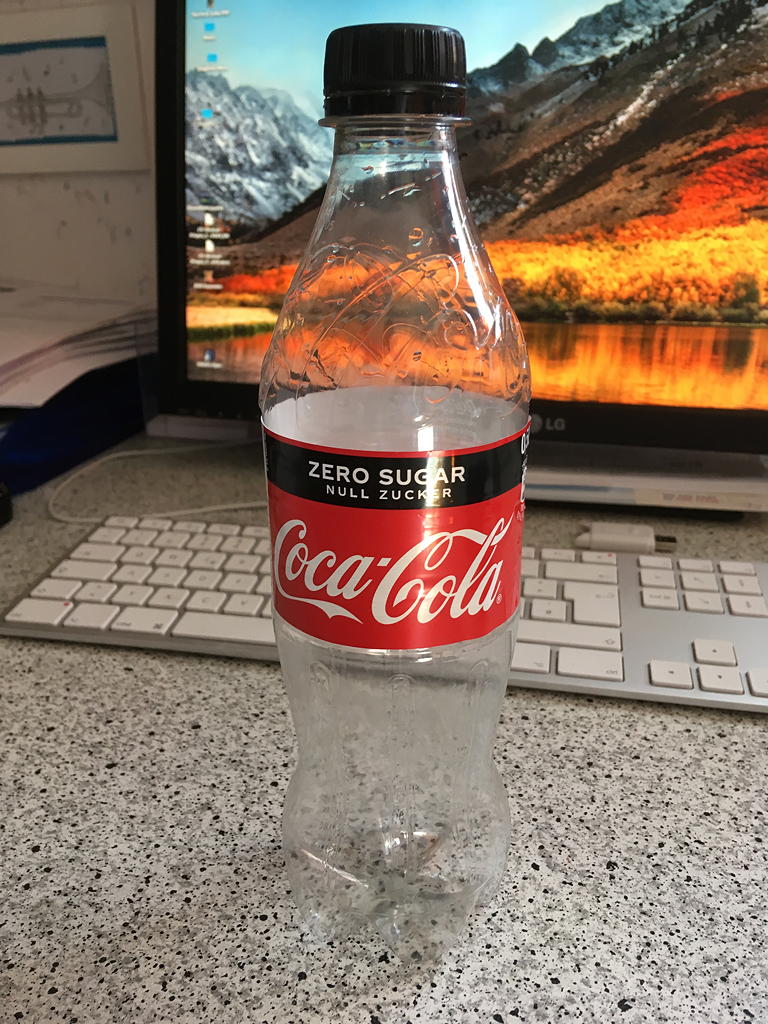
- Now cut the top off as in the picture. Leave a little of the straight sides to provide a flat gluing surface:
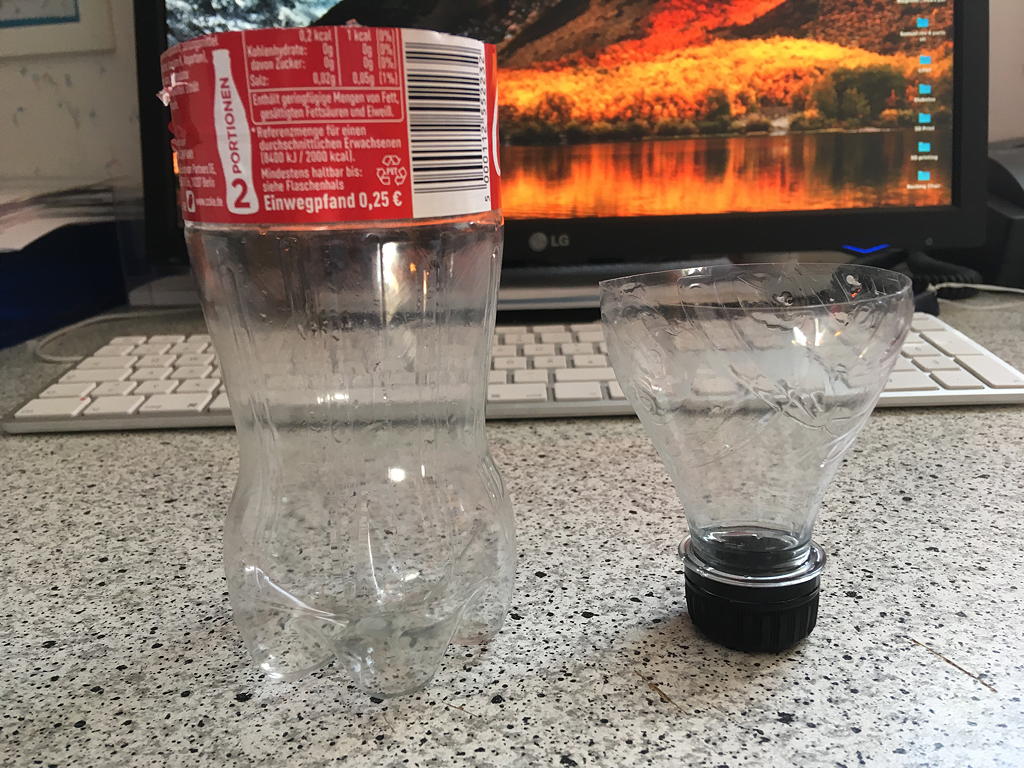
- Cut the bottom off as shown and discard the middle part:
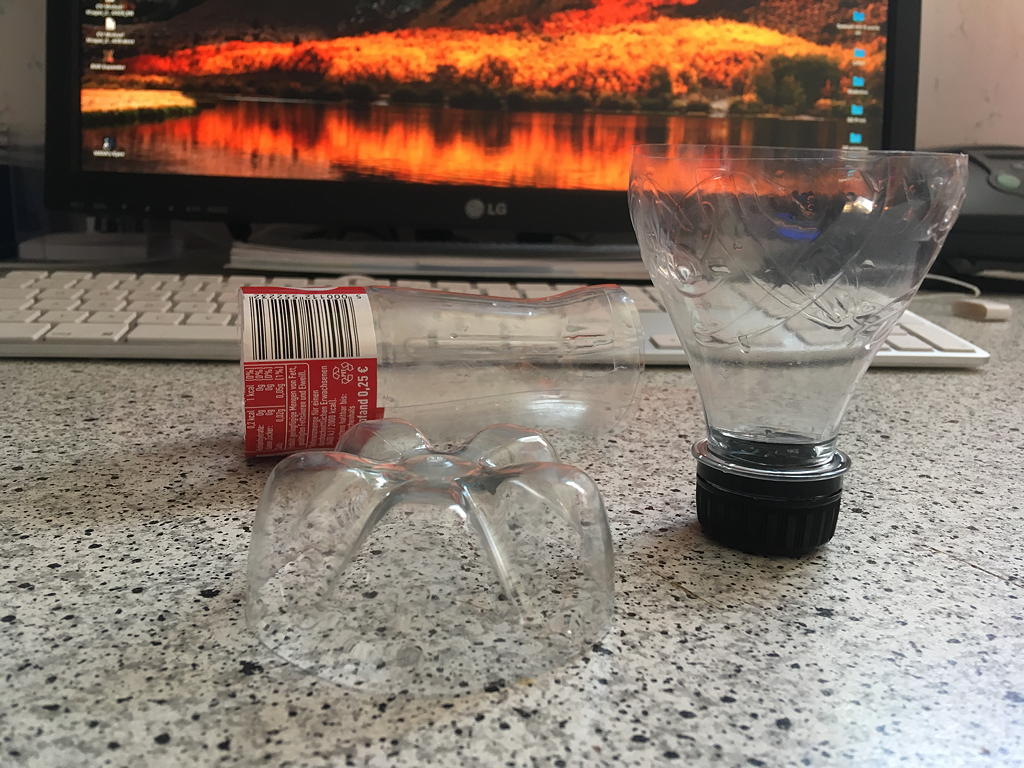
- Test the top and bottom parts for fit:
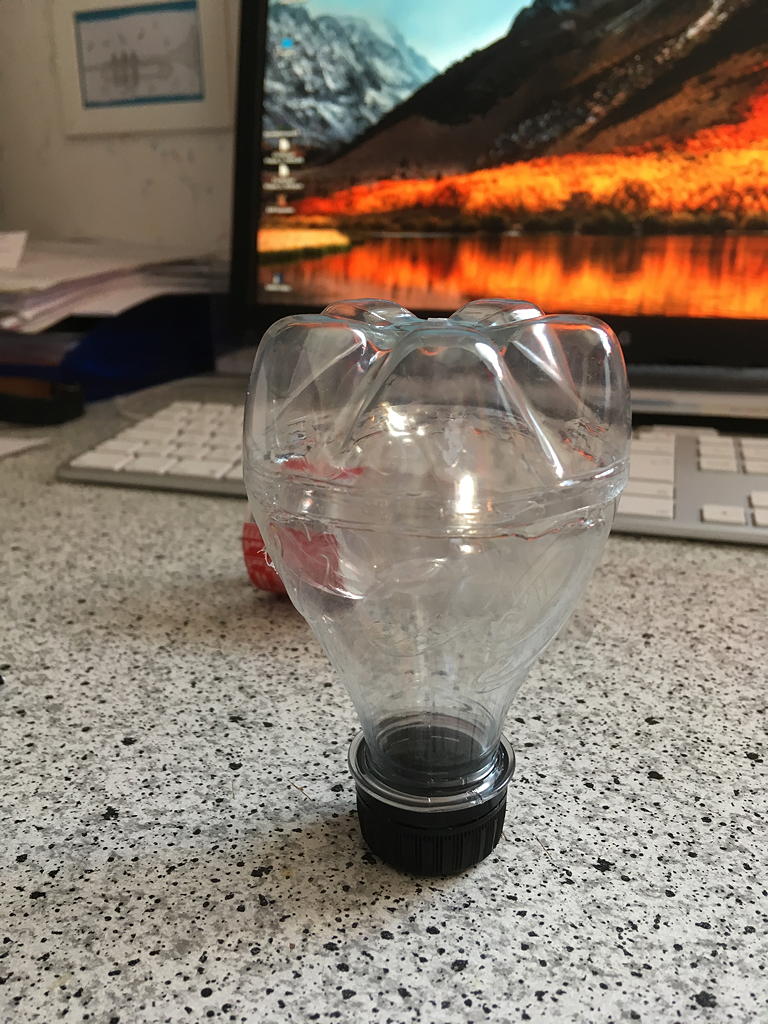
- Glue both parts together with your favorite glue and use tape to secure during the drying process(make sure that the glue is suitable for PET):
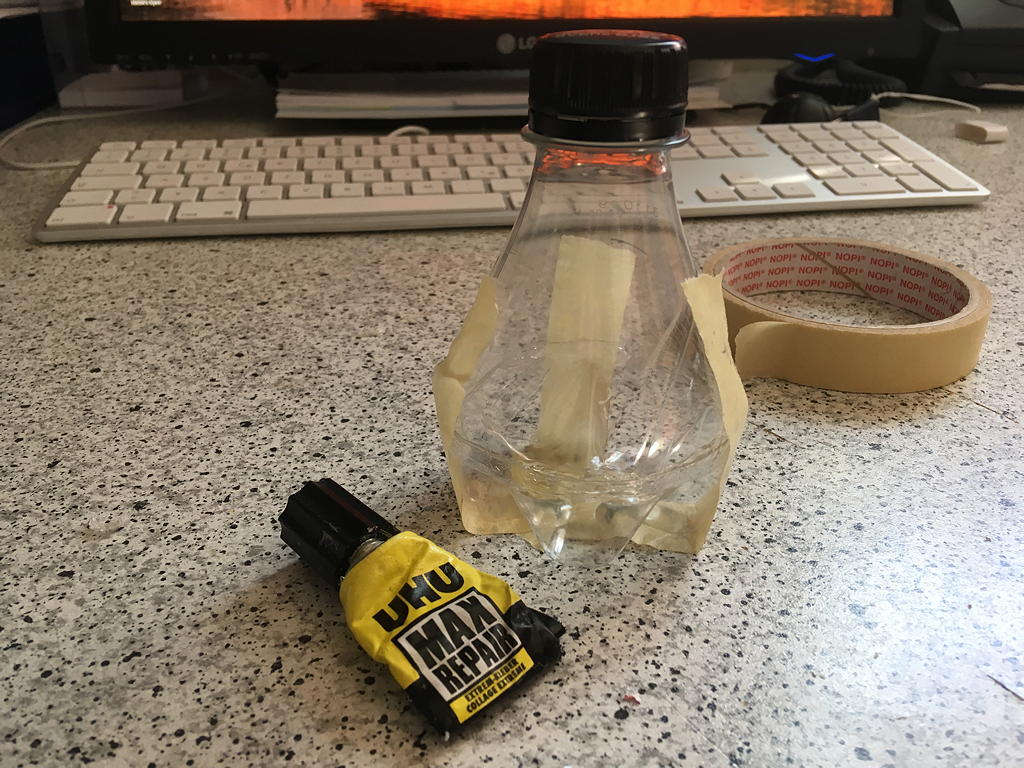
- Cut off the rim on the neck:
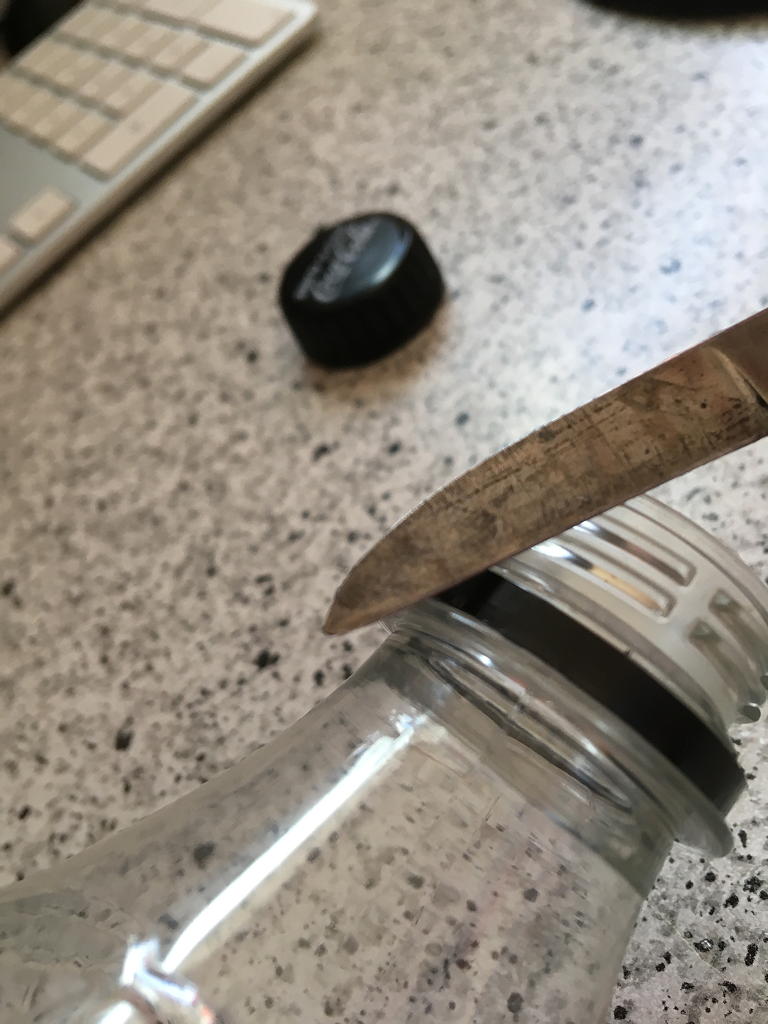
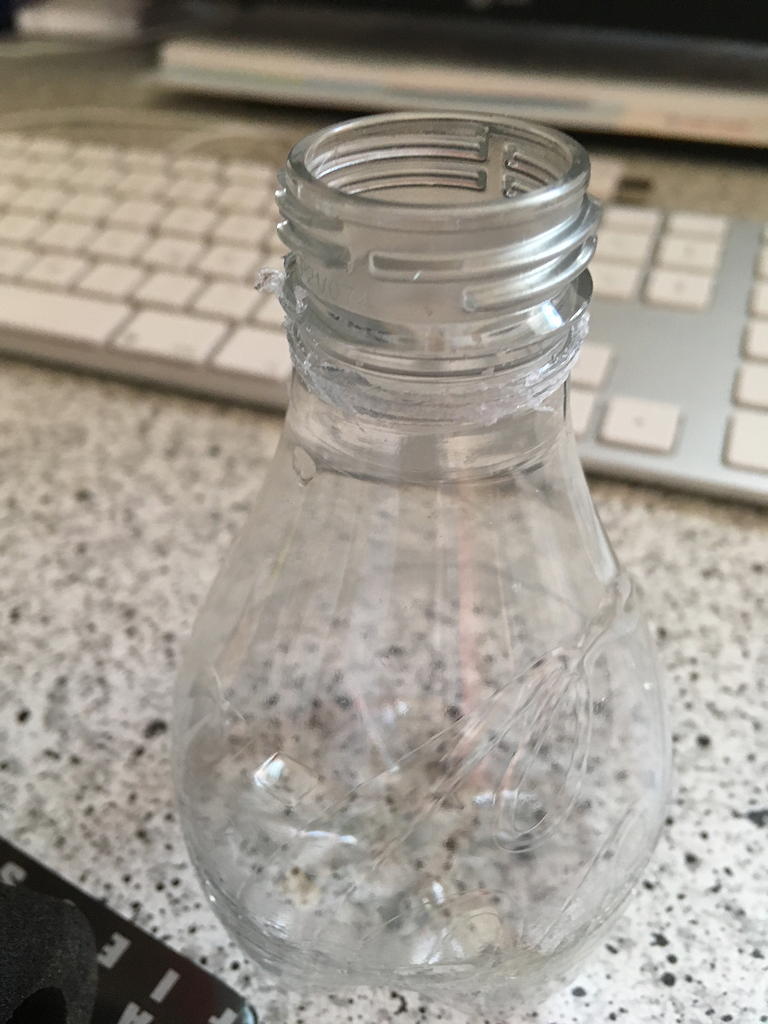
- For the gasket between the mute and bell I used a bicycle grip
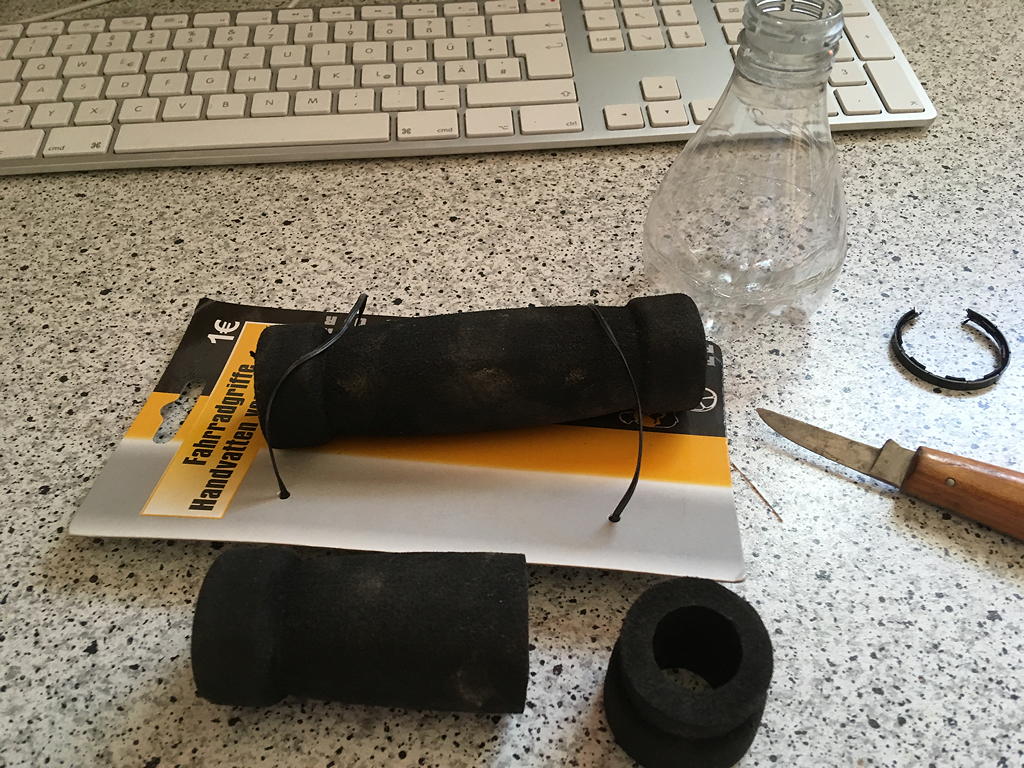
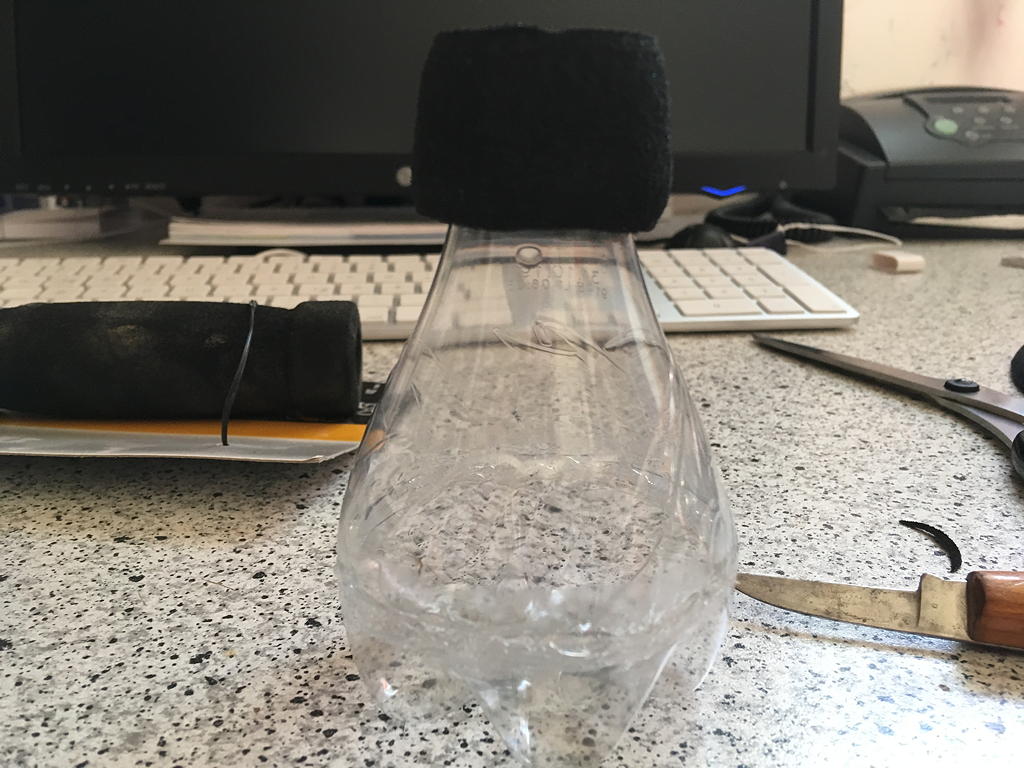
- Drill a hole in the top a bit smaller than a drinking straw
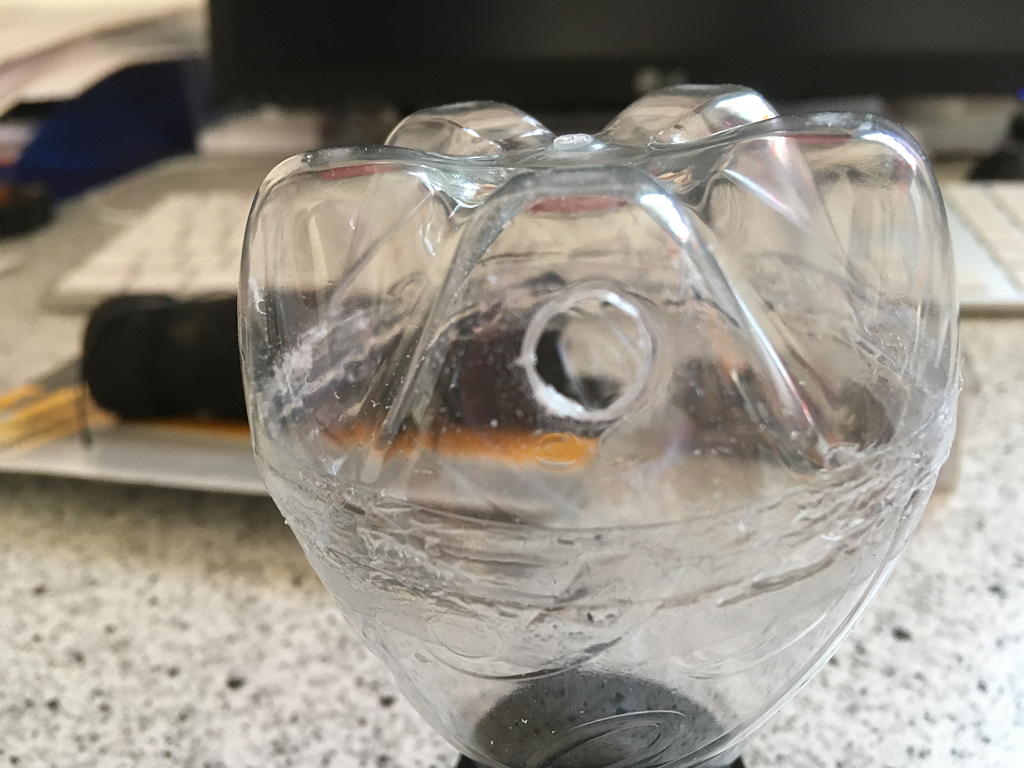
- for the 0.33 liter mute( middle) cut a straw to 3cm and glue it into the hole. For the 0.5 liter mute (right), a 2cm length works well
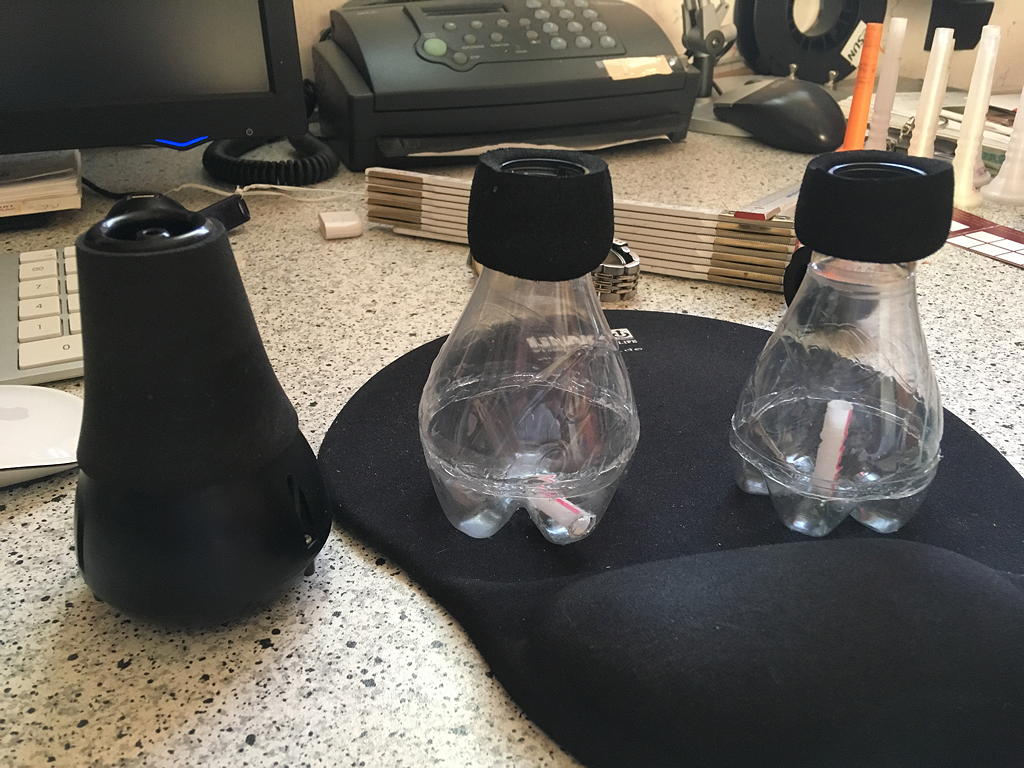
Longer straw lengths do not reduce volume as much but are more free blowing. Too short lengths reduce volume but are very stuffy/fuzzy
- The first step is to get rid of the Coke (in my case Coke Zero)! Then wash out the bottle and let dry.
-
Does it have to be "null zucker"?
-
@ROWUK ... or for ~$2.50 US (including shipping), you can choose from among several practice mutes on eBay. Fine tune them by inserting cotton balls, if necessary. I tried one just for fun; it works surprisingly well after finding the right amount of cotton to use.
-
@administrator said in DIY Practice mute out of PET Coke bottles:
Does it have to be "null zucker"?
For my type of playing for sure...
-
@J-Jericho Half of the fun is the positive comments from colleagues for the idea. The coke bottles are physically more stable than much of the competition. My favorite is the smaller 0.33 liter mute. In theory, this is an adaptation of the Renuzit mute.
-
@ROWUK It is fun to engineer stuff like that. Now if we can just find a way to make a natural trumpet out of plastic hose and a funnel....
-
@ROWUK said in DIY Practice mute out of PET Coke bottles:
@administrator said in DIY Practice mute out of PET Coke bottles:
Does it have to be "null zucker"?
For my type of playing for sure...
Sweet!
-
I've got a pair of those as souvenirs from The Crazy Horse Saloon in Paris.
-
@ROWUK said in DIY Practice mute out of PET Coke bottles:
@J-Jericho Half of the fun is the positive comments from colleagues for the idea. The coke bottles are physically more stable than much of the competition. My favorite is the smaller 0.33 liter mute. In theory, this is an adaptation of the Renuzit mute.
Looks very good, sir.
But.......don’t you have a 3D printer now? I guess this is just for our enlightenment.
Seriously, I have been dreaming of making a wooden mute, but not for practice, but performance. Different ways to approach it, should I use a lathe, or glue sections of nice hardwood together and then use the lathe? These are the type of thoughts that go through my mind while taking my walks.
Yes, I did already make a wooden trumpet, for those who didn’t know. -
@BigDub Do a Google search for "wooden trumpet mute images" and "wooden trumpet mute" in YouTube for inspiration.
-
@BigDub first of all props to you for having made a wooden trumpet. I've done enough wood turning to know that my wood-turning skills are not up to such a challenge. I can see two issues with turning a wooden mute - first the difficulty in turning such a thin-walled object (there, I've confessed my limitations), the second is the durability of the item. It would likely be pretty fragile. A fabricated wooden mute would have its own construction challenges but at least each wooden part would be cut such that t wasn't cross-grain.
But I do look forward to seeing any the outcome of you efforts... -
@tjcombo said in DIY Practice mute out of PET Coke bottles:
@BigDub first of all props to you for having made a wooden trumpet. I've done enough wood turning to know that my wood-turning skills are not up to such a challenge. I can see two issues with turning a wooden mute - first the difficulty in turning such a thin-walled object (there, I've confessed my limitations), the second is the durability of the item. It would likely be pretty fragile. A fabricated wooden mute would have its own construction challenges but at least each wooden part would be cut such that t wasn't cross-grain.
But I do look forward to seeing any the outcome of you efforts...First of all, I appreciate the compliment, though perhaps it might be exaggerated a bit. And secondly, my wooden mute construction ideas are so far working just fine, in the current state they sit, which is firmly in my head.
I have gone through quite a few scenarios and possible techniques,( once again, in my head ) and they are often dismissed before going to trial....I will certainly check out those mutes in a googly kind of way soon. -
@BigDub Yes, I have a 3D printer and have printed over 50 good working mouthpieces (mostly natural trumpet and cornetto - but some "Monette" clones) - as well as a bunch of other stuff. Next project it to get the spherical 3d tweeter horns plugged into the audio system.
-
@BigDub: Wooden mutes can be made easily just like the "Stone Lined" mutes are constructed. Using veneer to make the cone is easy, then a hardwood top. Corks come from wine bottles.
-
@ROWUK said in DIY Practice mute out of PET Coke bottles:
@BigDub: Wooden mutes can be made easily just like the "Stone Lined" mutes are constructed. Using veneer to make the cone is easy, then a hardwood top. Corks come from wine bottles.
Thanks, Rowuk. I will add that idea to the few others I have floating around in my head!
-
@BigDub FWIW I tested Tite-Bond wood adhesive by breaking a piece of wood and then gluing it back together, followed by breaking the same piece again. It did not break at the glued joint, so I repeated the same process with the same results. I've used the stuff to repair broken instrument cases, and in one instance to reconstruct the shattered case that came with my Olds Studio trombone when I purchased it. I'm confident that it is now stronger than new.
-
@J-Jericho said in DIY Practice mute out of PET Coke bottles:
@BigDub FWIW I tested Tite-Bond wood adhesive by breaking a piece of wood and then gluing it back together, followed by breaking the same piece again. It did not break at the glued joint, so I repeated the same process with the same results. I've used the stuff to repair broken instrument cases, and in one instance to reconstruct the shattered case that came with my Olds Studio trombone when I purchased it. I'm confident that it is now stronger than new.
Titebond is certainly excellent woodworking glue, I have used it plenty of times. When I want a super secure bond for laminating something to be turned on a lathe, however, the best thing for me has been Gorilla Glue.
So that is a consideration also.
This will help me with what I may do because I think I am zeroing in on my method for the wooden mute. -
@BigDub There are three reasons why I don't use Gorilla Glue. Compared to Tite-Bond, I find that:
- It's harder to clean up.
- It takes very little time for the contents of the container to solidify, making it a one-time use product.
- It costs more.
-
@J-Jericho said in DIY Practice mute out of PET Coke bottles:
@BigDub There are three reasons why I don't use Gorilla Glue. Compared to Tite-Bond, I find that:
- It's harder to clean up.
- It takes very little time for the contents of the container to solidify, making it a one-time use product.
- It costs more.
Agree with all three of those points, however none of those pertain to performance. When I have used gorilla glue for specific bonding before turning the piece on the lathe, I have experienced a very high satisfaction.
I use Titebond and continue to use titebond for all the same reasons you mention, and it does a fine job indeed. But for bonding something to be put on the lathe, my choice?Gorilla. -
@BigDub I'm guessing here, but is it because GG is more brittle and matches that particular characteristic of wood so there's less variation in drag on the cutting bit?